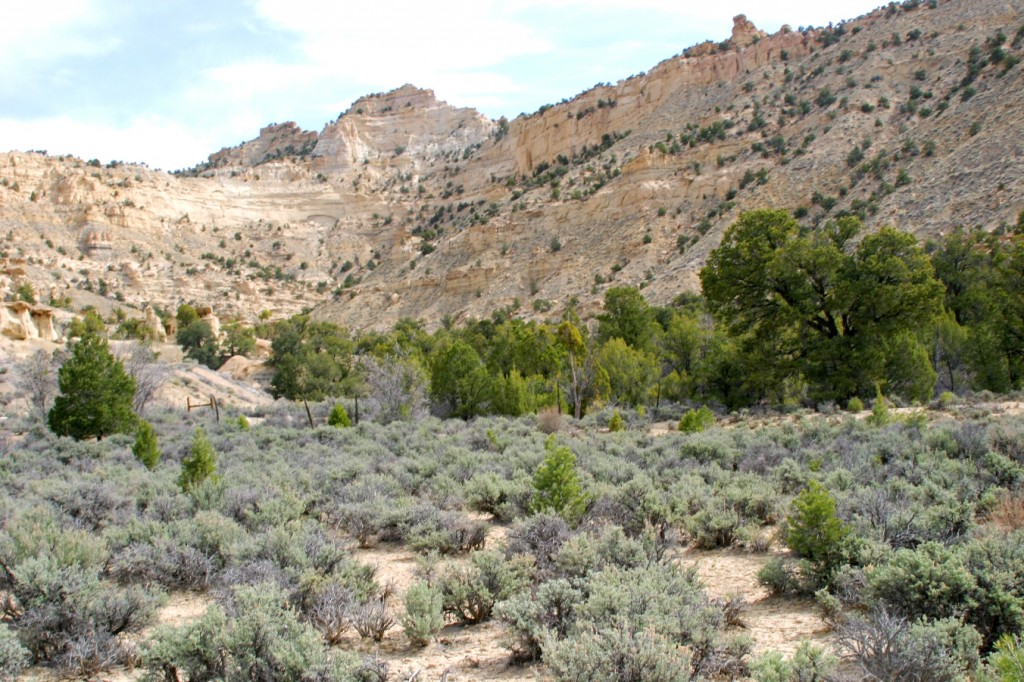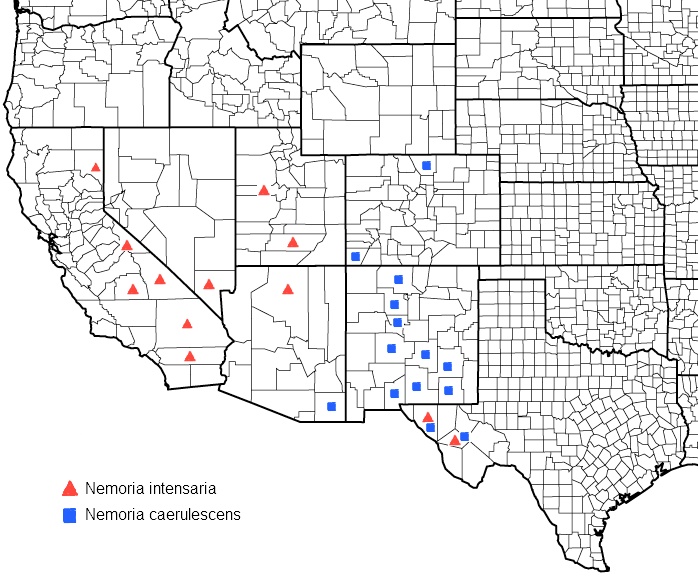A wide diversity of bright green moth species commonly called emerald moths are found in the American Southwest from California and Arizona to Utah, New Mexico and Texas. All of these moths are part of a family called the Geometridae, commonly known as “inchworm” moths or loopers on account of the form of their distinctive caterpillars. In some locations, two, three or even four different closely related species can be found at the same location. In 2013, we collected three different green Nemoria species at one single site in the Grand Staircase Escalante National Monument: Nemoria obliqua, Nemoria intensaria, and Nemoria unitaria.
 Canyon habitat in the Grand Staircase Escalante National Monument where three different species of Nemoria were collected. Important plant species present at the site included juniper, skunkbush sumac, Gambel oak, mountain mahogany, and antelope bitterbrush.
Canyon habitat in the Grand Staircase Escalante National Monument where three different species of Nemoria were collected. Important plant species present at the site included juniper, skunkbush sumac, Gambel oak, mountain mahogany, and antelope bitterbrush.
Of particular interest to us were the Nemoria intensaria moths, the focus of a current study working to compare this species to a very closely related species from nearby New Mexico called Nemoria caerulescens. These two species are so similar in some ways that taxonomists have had a hard time accurately distinguishing them in museum collections. Understanding what might make these two species different requires examining not only the size and markings of the adult moths, but also the shape of tiny internal structures that make up the form of the moths reproductive organs or genitalia. In addition, important information comes from studying the form of the different caterpillars along with the host plants where the females lay eggs and the plants that the caterpillars will eat.
A map (below) that shows some of the primary localities where Nemoria caerulescens and Nemoria intensaria have been collected shows a separation of these two moths over most of their range with Nemoria caerulescens extending from west Texas through much of New Mexico and into Colorado while Nemoria intensaria is more common in the eastern Mojave in California and the Great Basin from Nevada and Utah into northern Arizona. Both species have been identified in a few counties in extreme west Texas. Current research is focused on testing whether DNA differences support the separation of these two species and how the geographic separation and variability might be related to differences in what host plants are used by the two species and how the larval stages develop.
To learn more about the role of DNA in distinguishing species, click here.
To read about insect – host plant relationships and life history studies, click here.
To learn about the use of genitalic structures and larval stages in providing more data used to help distinguish species, click here.


